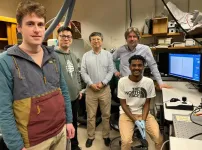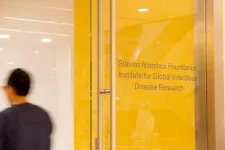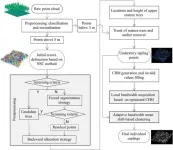(Press-News.org) ChatGPT and its ability to hold conversations and produce written content have been the focus of a lot of attention in the last year in the field of technology and artificial intelligence. However, AI has been around for some time, helping us in all sorts of everyday tasks, from navigation systems to social network algorithms, not to mention machine translation. Ever since neural machine translation (NMT) systems began to be used on a widespread basis a few years ago, AI has seen exponential growth in its uptake in the translation industry. This has led to new challenges in the relationship between human and machine translators.
Today, the post-editing of machine translations is the second-most sought-after skill among language service providers and is the task with the greatest growth potential, according to the European Language Industry Survey. Translators edit unprocessed machine translations, correcting texts produced by artificial intelligence. This brings with it many advantages for human translators, but also significant problems if the quality of the machine translation is poor. This is why the ability to objectively assess the quality of machine translation tools is essential for the sector.
Two researchers from the Universitat Oberta de Catalunya (UOC), Antoni Oliver, member of the Interinstitutional Research Group in Linguistic Applications (GRIAL-UOC), coordinator of the TAN-IBE project and member of the UOC's Faculty of Arts and Humanities, and Sergi Álvarez-Vidal, a fellow GRIAL-UOC researcher, have developed a new method for assessing work by AI to improve translators' work, boosting their capabilities with the potential of machine translation, and enhancing the quality of the end result for all users.
A new method for assessing AI in translation
Most translation and language services companies analyse the quality of AI tools in a similar way, using automated metrics. In their latest study, Assessing MT with measures of PE effort, published as open access, Oliver and Álvarez-Vidal have analysed the degree to which these automated assessment systems actually help to choose tools that really facilitate the subsequent work of human translators. To do this, they measured the so-called post-editing effort, calculating the time, the breaks taken and the keys used by translators to gain an in-depth understanding of the difficulties involved in editing and correcting a text produced by machine translation.
"We have concluded that there is no direct relationship between what automated quality assessment metrics say and the actual post-editing effort involved," said Oliver. "We therefore felt that there was a need to add a further step to the quality assessment system." So it is that the researchers suggest complementing automated assessment systems with another program that helps evaluate the actual effort put into post-editing. This will allow companies to choose an AI tool that actually increases the efficiency of the translation process.
"We have added a further step: translators translate a sample of the machine translation with a special program we have developed. This program allows us to gather a range of data and decide whether the effort made by the translators is less than that with other systems," explained Álvarez-Vidal. "If it is less, it means that this machine translation tool works for the translation company's workflow."
AI, support for human translators
Machine translation systems are widely used in the translation industry, although the end results are always reviewed by people. During this post-editing work, human professionals accept, amend and correct or even reject in its entirety the result produced by machines. "In this regard, it is extremely important to think about who is at the heart of this task: the human post-editor or the artificial intelligence system?" said Oliver. "We're convinced that the leading role is played by humans, and that the AI system must be at their service, helping them to become more productive whilst ensuring the final quality of the product."
According to the researchers, the quality of machine translation has a direct impact on translators' work. Greater effort entails more time and difficulty in post-editing and this has two clear consequences: it increases the risk of the end result being of poorer quality because the translator in question is unable to catch all the errors and it also increases the time the translator spends on post-editing, which is a waste of money. "Quality in machine translation is essential for there to be a proper post-editing process," said Oliver.
Studies like this one by the two UOC researchers also have an important indirect impact: they improve our understanding of machine translation tools, and thereby democratize access to them and ensure that their use does not affect the working conditions of human translators. "It's extremely important that our understanding of these technologies and access to these tools is not restricted to just a few specialists and a limited number of companies," concluded Álvarez-Vidal. "Universities in general, and the UOC in particular, are making great efforts to include an understanding of these technologies in their courses, on both bachelor's and master's degree programmes."
This research by the UOC contributes to UN Sustainable Development Goal (SDG) 8, Promote sustained, inclusive and sustainable economic growth, full and productive employment and decent work for all.
UOC R&I
The UOC's research and innovation (R&I) is helping overcome pressing challenges faced by global societies in the 21st century by studying interactions between technology and human & social sciences with a specific focus on the network society, e-learning and e-health.
Over 500 researchers and more than 50 research groups work in the UOC's seven faculties, its eLearning Research programme and its two research centres: the Internet Interdisciplinary Institute (IN3) and the eHealth Center (eHC).
The university also develops online learning innovations at its eLearning Innovation Center (eLinC), as well as UOC community entrepreneurship and knowledge transfer via the Hubbik platform.
Open knowledge and the goals of the United Nations 2030 Agenda for Sustainable Development serve as strategic pillars for the UOC's teaching, research and innovation. More information: research.uoc.edu.
END
An unassuming brown bovine from the south of Brazil has made history as the first transgenic cow capable of producing human insulin in her milk. The advancement, led by researchers from the University of Illinois Urbana-Champaign and the Universidade de São Paulo, could herald a new era in insulin production, one day eliminating drug scarcity and high costs for people living with diabetes.
“Mother Nature designed the mammary gland as a factory to make protein really, really efficiently. We can take advantage ...
Ammonia (NH3) is an important molecule with many applications. The end product of the famed Haber–Bosch process, it is commonly synthesized to capture nitrogen for fertilizers, and is used for refrigeration, in cleaning products, and in the production of pharmaceuticals. Recently, this modest molecule has also attracted interest as a potential resource for addressing one of today’s most pressing challenges — the need for reliable and abundant renewable fuels.
Ammonia is stable and safe ...
Most babies begin recognizing themselves in mirrors when they are about a year and half old. This kind of self-recognition is an important developmental milestone, and now scientists at The University of Texas at Austin have discovered a key driver for it: experiences of touch.
Their new study found babies who were prompted to touch their own faces developed self-recognition earlier than those who did not. The research was published this month in the journal Current Biology.
“This suggests that babies pulling ...
A Dartmouth Engineering-led study published in Joule reported the discovery of an entirely new high-performance material for solar absorbers—the central part of a solar cell that turns light into electricity—that is stable and earth-abundant. The researchers used a unique high-throughput computational screening method to accelerate the discovery process and were able to quickly evaluate approximately 40,000 known candidate materials.
"This is the first example in the field of photovoltaics where a new material has been found through this type ...
Small wearable or implantable electronics could help monitor our health, diagnose diseases, and provide opportunities for improved, autonomous treatments. But to do this without aggravating or damaging the cells around them, these electronics will need to not only bend and stretch with our tissues as they move, but also be soft enough that they will not scratch and damage tissues.
Researchers at Stanford have been working on skin-like, stretchable electronic devices for over a decade. In a paper published ...
Females of some whale species have evolved to live drastically longer lives so they can care for their families, new research shows.
The study focussed on five whale species that – along with humans – are the only mammals known to go through menopause.
The findings show that females of these whale species that experience menopause live around 40 years longer than other female whales of a similar size.
By living longer without extending their “reproductive lifespan” (the years in which they breed), these ...
UCL Press Release
Under embargo until Wednesday 13 March 2024, 16:00 UK time / 12:00 US Eastern time
Global GDP loss from climate change will increase exponentially the warmer the planet gets when its cascading impact on global supply chains is factored in, finds a new study led by UCL researchers.
The study, published in Nature, is the first to chart “indirect economic losses” from climate change on global supply chains that will affect regions that would have been less affected by projected warming temperatures.
These previously unquantified disruptions in supply chains will further exacerbate projected economic losses due ...
From identifying the influenza virus that caused the pandemic of 1918 to developing vaccines against pneumococcal pneumonia and bacterial meningitis in the 1970s, combating infectious disease has a rich history at Rockefeller. That tradition continues as the Stavros Niarchos Foundation Institute for Global Infectious Disease Research at Rockefeller University (SNFiRU) caps a successful first year with the establishment of a new advisory board.
This international advisory board was created in part to give guidance on how to best use ...
When we daydream, we must be able to snap back to attention at a moment’s notice. Researchers at Boston Children’s Hospital uncovered how our brains can do things like react to a question when we’re daydreaming: firing activity in part of the brain called the dentate gyrus keeps us focused on what’s happening in our environment. And the team found that the same neural activity also helps with forming memories. The findings were published in Nature on March 13, 2024.
“We have found a brain mechanism for breaking up periods of mind wandering and realigning the ‘cognitive ...
The regeneration of forest saplings is pivotal for maintaining biodiversity and ecosystem productivity, necessitating innovative management techniques for continuous forest coverage. Traditional 2-dimensional remote sensing struggles to accurately capture the complex, understory sapling dynamics. To address this, researchers are exploring the use of aerial laser scanning (ALS) for its potential in providing detailed 3-dimensional insights. However, despite progress in using ALS data to estimate tree metrics, accurately identifying and quantifying the phenotypic ...






